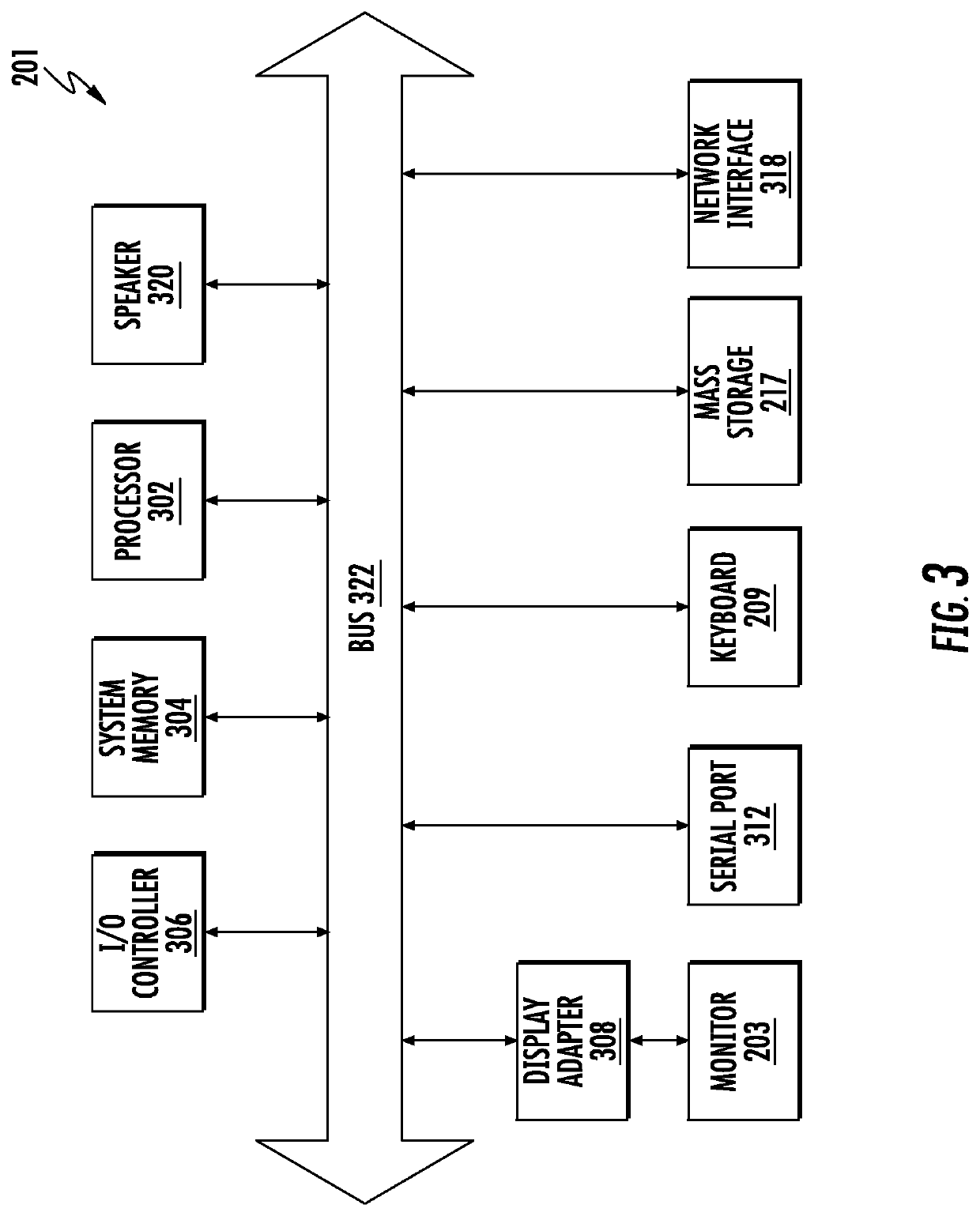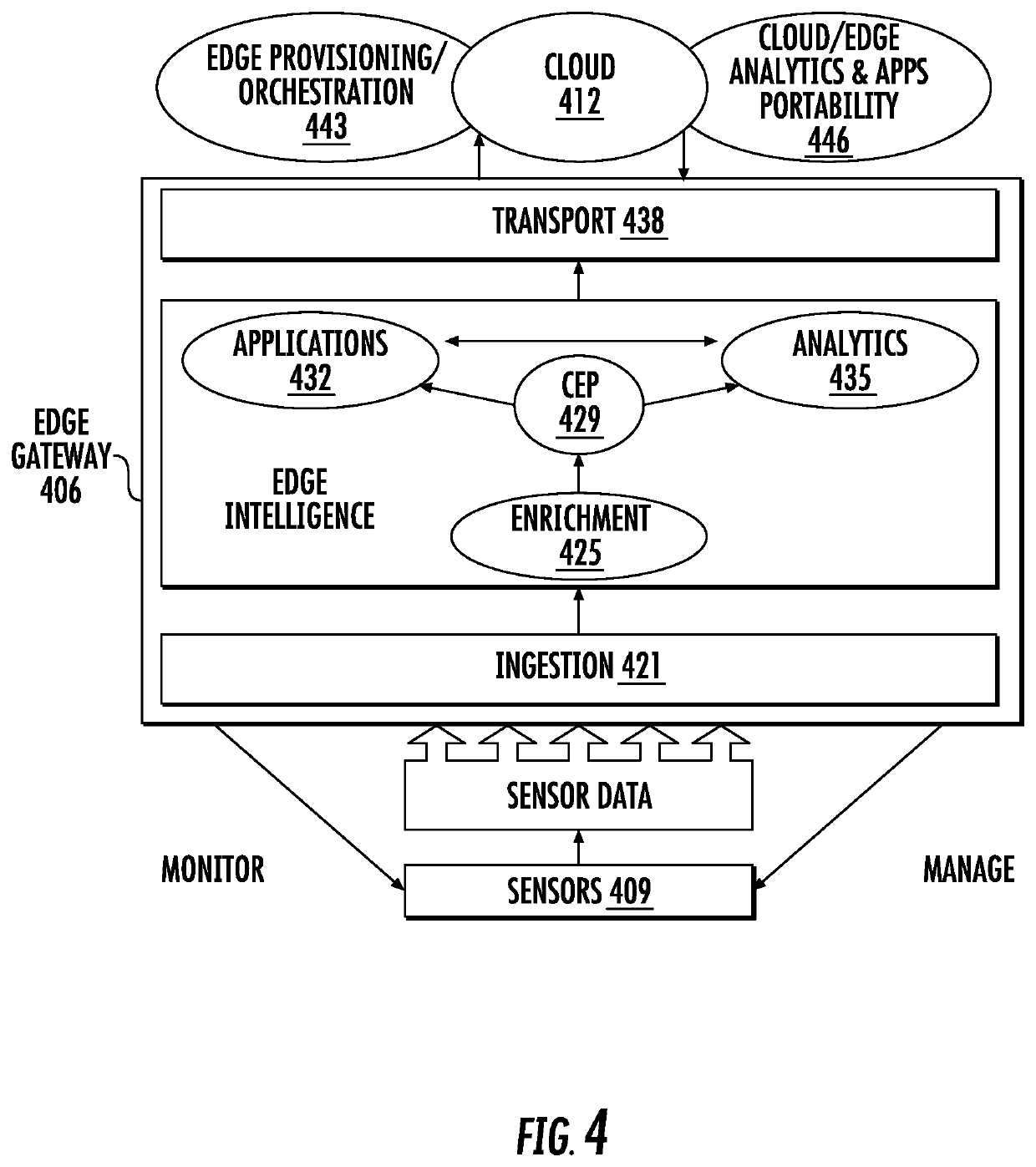Intelligent Edge Computing Platform with Machine Learning Capability
a machine learning and edge computing technology, applied in computing models, biological models, instruments, etc., can solve the problems of high cost overhead of software development, testing and deployment, and the decline of sensors and network technology, so as to improve accuracy
- Summary
- Abstract
- Description
- Claims
- Application Information
AI Technical Summary
Benefits of technology
Problems solved by technology
Method used
Image
Examples
Embodiment Construction
[0042]FIG. 1 is a simplified block diagram illustrating a distributed computer network 100 incorporating an example embodiment of the present invention. Computer network 100 includes a number of client systems 113, 116, and 119, and a server system 122 coupled to a communication network 124 via a plurality of communication links 128. Communication network 124 provides a mechanism for allowing the various components of distributed network 100 to communicate and exchange information with each other.
[0043]Communication network 124 may itself be comprised of many interconnected computer systems and communication links. Communication links 128 may comprise hardwire links, optical links, satellite or other wireless communications links, wave propagation links, or any other mechanisms for communication of information.
[0044]Communication links 128 may comprise DSL, Cable, Ethernet or other hardwire links, passive or active optical links, 3G, 3.5G, 4G and other mobility, satellite or other w...
PUM
 Login to View More
Login to View More Abstract
Description
Claims
Application Information
 Login to View More
Login to View More - R&D
- Intellectual Property
- Life Sciences
- Materials
- Tech Scout
- Unparalleled Data Quality
- Higher Quality Content
- 60% Fewer Hallucinations
Browse by: Latest US Patents, China's latest patents, Technical Efficacy Thesaurus, Application Domain, Technology Topic, Popular Technical Reports.
© 2025 PatSnap. All rights reserved.Legal|Privacy policy|Modern Slavery Act Transparency Statement|Sitemap|About US| Contact US: help@patsnap.com



